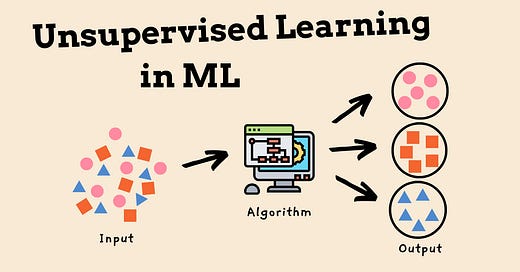The Ultimate Guide to Unsupervised Learning: Improve Your Data Analysis with Clustering and PCA
Discover how unsupervised learning with clustering and PCA can unlock hidden patterns in data, improve analysis, and drive smarter business decisions.
Machine learning is generally split into two main types: supervised and unsupervised learning. In previous parts of this series, we looked at supervised learning, where the model learns from data that already has labels attached—each piece of data comes with a known outcome.
Now, we're shifting to unsupervised learning. Here it’s the Wild West, there are no labels or known outcomes. Instead of trying to predict something specific, unsupervised learning looks for patterns and structures hidden in the data.
Think about walking into a Blockbuster (for those young readers, blockbuster was basically amazing. It was a place to rent movies before Redbox and Netflix came along) with thousands of movies, but no categories or labels.
Your job is to organize them into meaningful groups. Without knowing the specific genres or classifications, you'd probably sort the movies based on similarities—like themes, acting style, or cover design.
Each week, I dive deep into Python and beyond, breaking it down into bite-sized pieces. While everyone else gets just a taste, my premium readers get the whole feast! Don't miss out on the full experience – join me today!
That’s what unsupervised learning is all about—finding order in what seems like chaotic data.
Two popular techniques in unsupervised learning are clustering and dimensionality reduction. Clustering groups similar data points together, while dimensionality reduction simplifies complex data by cutting down on the number of features, but keeping the important parts.
These methods are used in many areas, from marketing to biology, helping to reveal valuable insights hidden in large amounts of data.
If you haven’t subscribed to my premium content yet, you need to check it out. You unlock exclusive access to all of these articles and all the code that comes with them, so you can follow along!
Here is the roadmap for our Machine Learning series, I am the Machine. You should check it out as I have broken down what you can expect from this. Check out the roadmap here.
Plus, you’ll get access to so much more, like monthly Python projects, in-depth weekly articles, the '3 Randoms' series, and my complete archive!
👉 Thank you for allowing me to do work that I find meaningful. This is my full-time job so I hope you will support my work.
I spend a lot of my week on these articles, so if you find it valuable, consider joining premium. It really helps me keep going and lets me know you’re getting something out of my work!
If you’re already a premium reader, thank you from the bottom of my heart! You can leave feedback and recommend topics and projects at the bottom of all my articles.
👉 If you get value from this article, please help me out, leave it a ❤️, and share it with others who would enjoy this. Thank you so much!
Okay, time to ease into this rather larger than life topic. I hope I do justice in how I break this down. Grab some coffee, and let’s get the ball rolling!
Keep reading with a 7-day free trial
Subscribe to The Nerd Nook to keep reading this post and get 7 days of free access to the full post archives.





